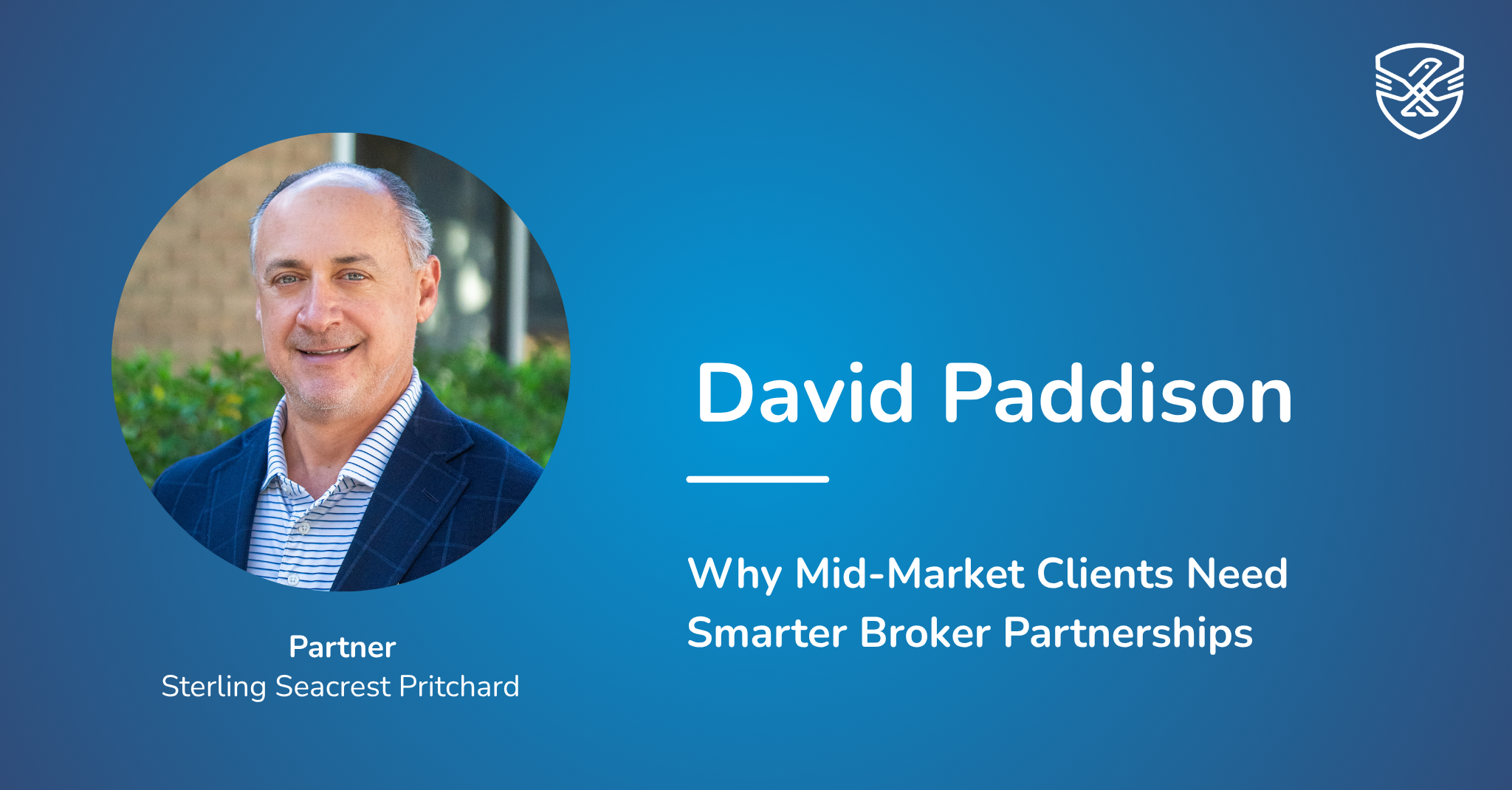
David Paddison on Middle Market Broker Partnerships
Wednesday, June 18th, 2025
Large commercial clients in construction and property management are rethinking how they manage risk – not just because of rising premiums, but because of growing disparities in how organisations are structured to handle it.
According to David Paddison (pictured), president of Sterling Seacrest Pritchard, the biggest divide is no longer just by size or industry, but by sophistication.
“A lot of those firms have very rigorous risk management programs, and they kind of maintain an umbrella program over the top,” he said. These aren’t just tactics – they’re part of how the business is built. Many are private equity-owned or portfolio-driven, bringing scaled, centralised infrastructure that allows for higher deductibles, stronger analytics, and in-house risk strategy.
Brokers fill the void for under-resourced clients
In contrast, smaller firms often operate in what Paddison calls a “cowboy environment.” These businesses may be profitable and experienced – but they often lack formal risk functions. “They just don’t have the time, sophistication or the infrastructure to really do a deep dive,” he said.
That creates a prime opportunity for broker-led support. “That’s a great opportunity for brokers to kind of build closer relationships with the clients in that regard,” Paddison said.
But the role isn’t just about relationship building – it’s functional. Brokers often become de facto risk managers, applying benchmarking, analytics, and peer reviews to help these clients identify vulnerabilities and make smarter insurance decisions.
The middle market is where brokers make the biggest impact
Paddison sees the most urgent broker opportunity in the mid-market. These companies face rising risk complexity without the systems to manage it internally. “The more infrastructure you have, the more robust your risk management capabilities are in house,” he said. But in the mid-market, brokers are doing that legwork.
“The brokers who are able to do risk assessment and mitigation strategies in conjunction with the client are finding a better home in that middle market than at the upper market,” he said.
That challenge compounds for companies operating across jurisdictions. “Each state has different regulations and different requirements that people have to comply with,” Paddison said. “If they’re heavy California, heavy New York, that’s a very different risk profile and different broker engagement than the Midwest.”
Captives and deductibles add pressure – and paradox
As capacity tightens and premiums rise, many clients are pursuing alternatives: captives, high-deductible programs, and parametric solutions. But again, scale matters.
“If you’re just managing a spend like you know you’re going to have a certain level of claims in your burn level, then you’re going to be using alternative financing,” Paddison said. For clients with in-house expertise, that makes sense.
But in the mid-market, a growing number are assuming risk without the systems to support it. “Some of those middle market companies are taking larger risk… but sometimes they don’t have the infrastructure in place to manage that,” Paddison said.
The result? A paradox where cost-cutting leads to higher exposure. “By saving premiums, they may actually be spending more money,” he said. Without internal risk management, retained losses can quickly outpace the premium savings.
The gap is growing – and brokers must decide where they play
For Paddison, the lesson is clear: it’s not just about what’s insured – it’s about how well the client is equipped to manage what’s retained. And that’s where the broker’s role is shifting most dramatically.
His breakdown of the “cowboy” versus “corporate” mindset exposes the real fork in the road: companies with infrastructure, data, and strategy are adapting. Those without it risk being overwhelmed – unless their broker is ready to fill the gap.
Originally published in Insurance Business Mag.
